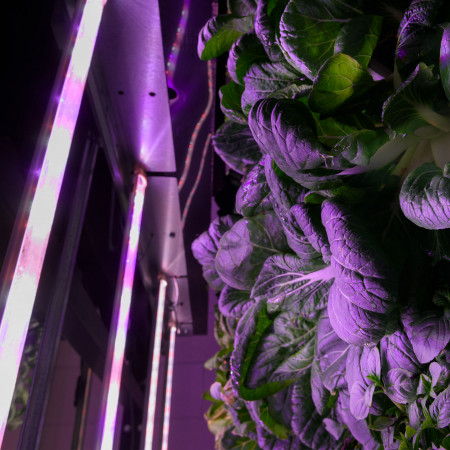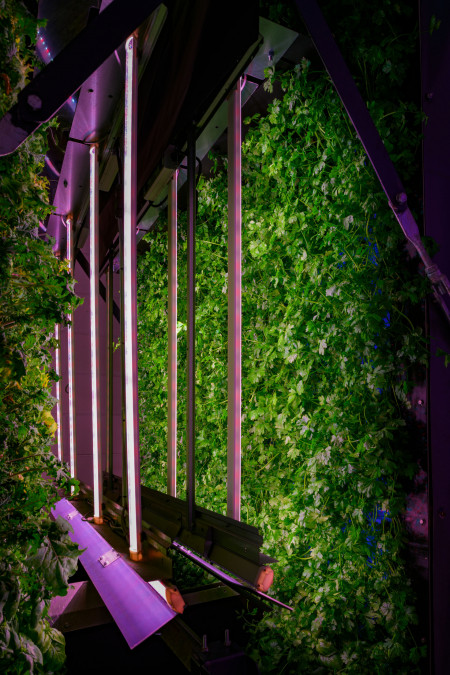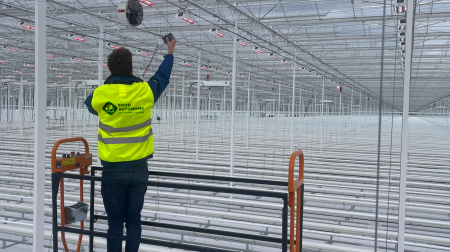Glowfarms founders Luc de Vries and Ben Pieterse have an ambitious plan. They want to turn vertical farming into a mainstream business that produces goods for the large masses at competitive prices. Set up 2 years ago, Glowfarms is built on the idea of creating a new type of vertical farming business model that would help make vertical farming mainstream and broadly applicable, says Ben Pieterse. “Currently, vertical farms are usually very expensive to build and operate, which means they are not able to produce at a competitive price. In our business model, vertical farming is a feasible solution for wholesalers and companies that are not necessarily at the top of the supply chain,” according to Pieterse.
The secret lies in applying technology that is capable of reducing labor and energy costs, as these are the biggest cost drivers in the vertical farming industry. Reducing these costs will enable vertical farms to cultivate high-quality produce for the larger masses at a good price. Factors such as automation and highly efficient lighting lie at the heart of the Glowfarms business model. Pieterse and his partner are looking into the ways to re-use the heat produced by the lamps in the vertical farms, but they are convinced that the biggest energy saving factor is climate regulation in the farms. By having to use less energy to regulate the climate, they can save big time on the energy bill.
The two young entrepreneurs started building their own farm, based on an existing patent out of necessity because there was no one who could build them the way they wanted to. Their focus is on baby leaves and a great variety of herbs, but they want to expand into fruit, especially berry crops, in the future. They plan to build a bigger farm in a central location in Netherlands in addition to the one they have in Hoorn.

In partnership with Food Autonomy
“I first came across Food Autonomy when I was giving a speech at an event organized by Wageningen University and was surprised to learn that the company was involved in the vertical farming business. I started following their activities and when we set up Glowfarms, I contacted them and visited their facilities in Hungary,” says Ben Pieterse.
Glowfarms ended up placing an order with Food Autonomy for 120 lighting fixtures installed in their pilot farm, but the next phase of the business will involve thousands of lights. The two founders are happy with the co-operation and praise the flexibility of the company. “We can order in a wide range of sizes and any configuration, which is unique because a lot of the other lighting providers only have standard sizes and standard configurations.”
Pieterse says that the plan is to expand abroad as they see heavy demand for this type of produce at the right price. They are already in talks with some partners in Hungary and other countries, too. The Middle East and certain regions of Asia seem like very promising locations but so is the US because of the long-distance transportation of food items there.

“If you are able to produce at a competitive price, which we have proven in The Netherlands, the same should be possible in many other countries. Our goal is to build truly competitive vertical farms; that is the starting point. I’m convinced it’s going to bring about a true vertical farming revolution,” Pieterse notes.
Photos: Glowfarms



